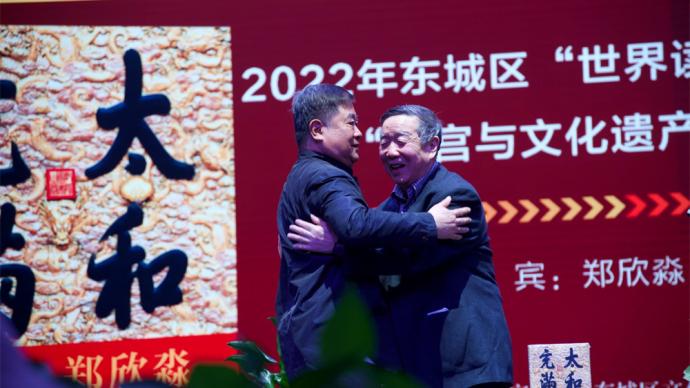
On April 22, the "World Book Day" theme event and the "Forbidden City and Cultural Heritage" new book launch event in Dongcheng District, Beijing was held in Beijing. 
During the day's event, Dongcheng District also launched five slow-life visit check-in routes in the "City of Books", including "National Trend Fashion", "Book Reflection for a Century", "National Wind and Quiet Alley", "Yeji Liu Yun" and "Old City Wenhua". Wangfujing Bookstore, Coderen Bookstore (Wangfujing Pingguoju Store), PAGEONE (Beijing Apm Store), Sanlian Taofen Bookstore (Art Museum Store), Gengshu Club (Dongcheng Longfu Temple Store), Shanhai Sihe by Jetlag There are 38 physical bookstores and street libraries, including Books, Shuxiangshiye Theme Street, and Meihousi Shijingshan Civic Cultural Center.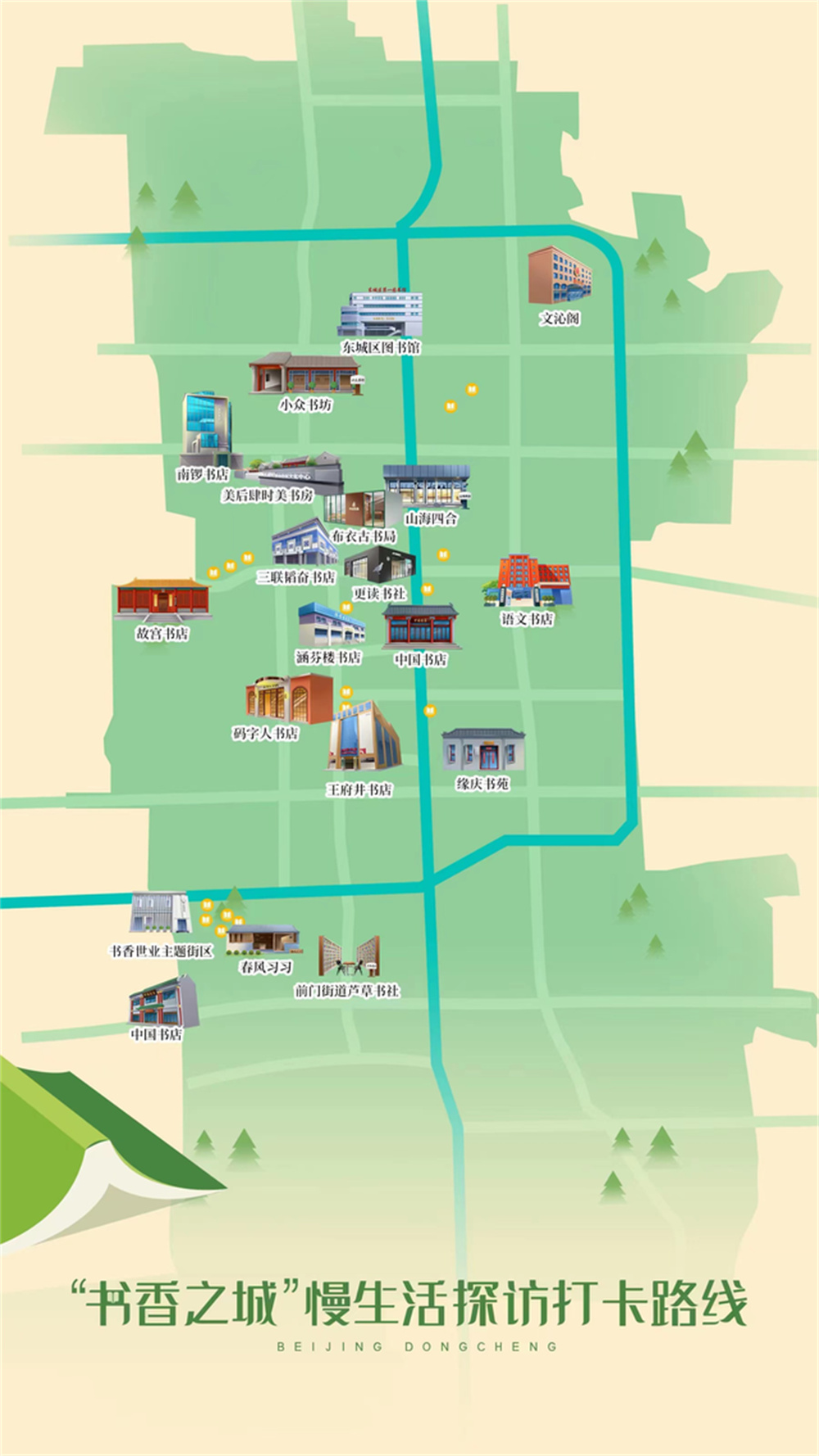
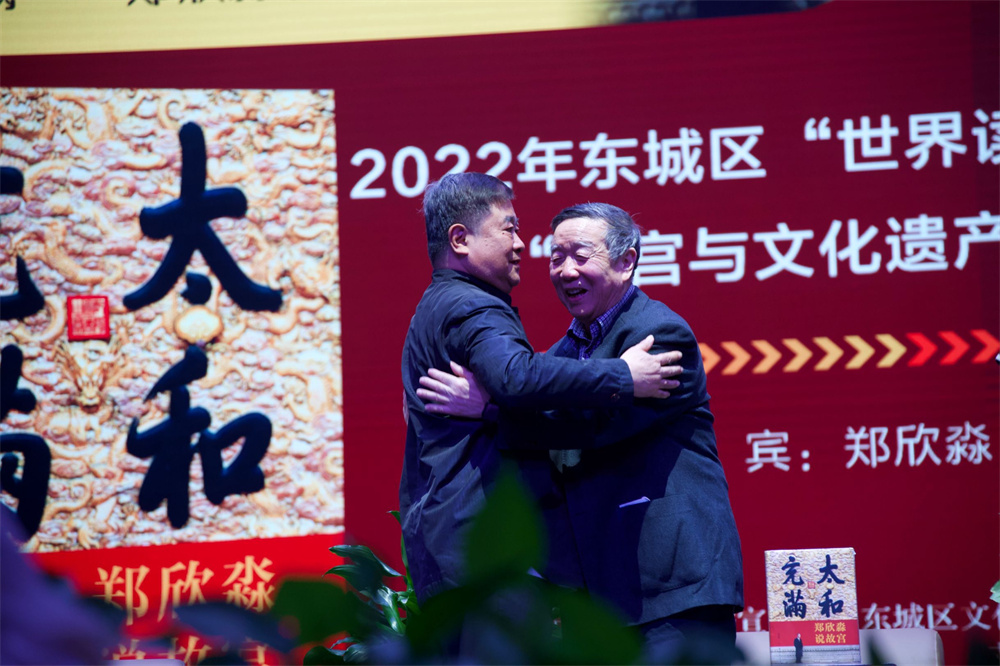
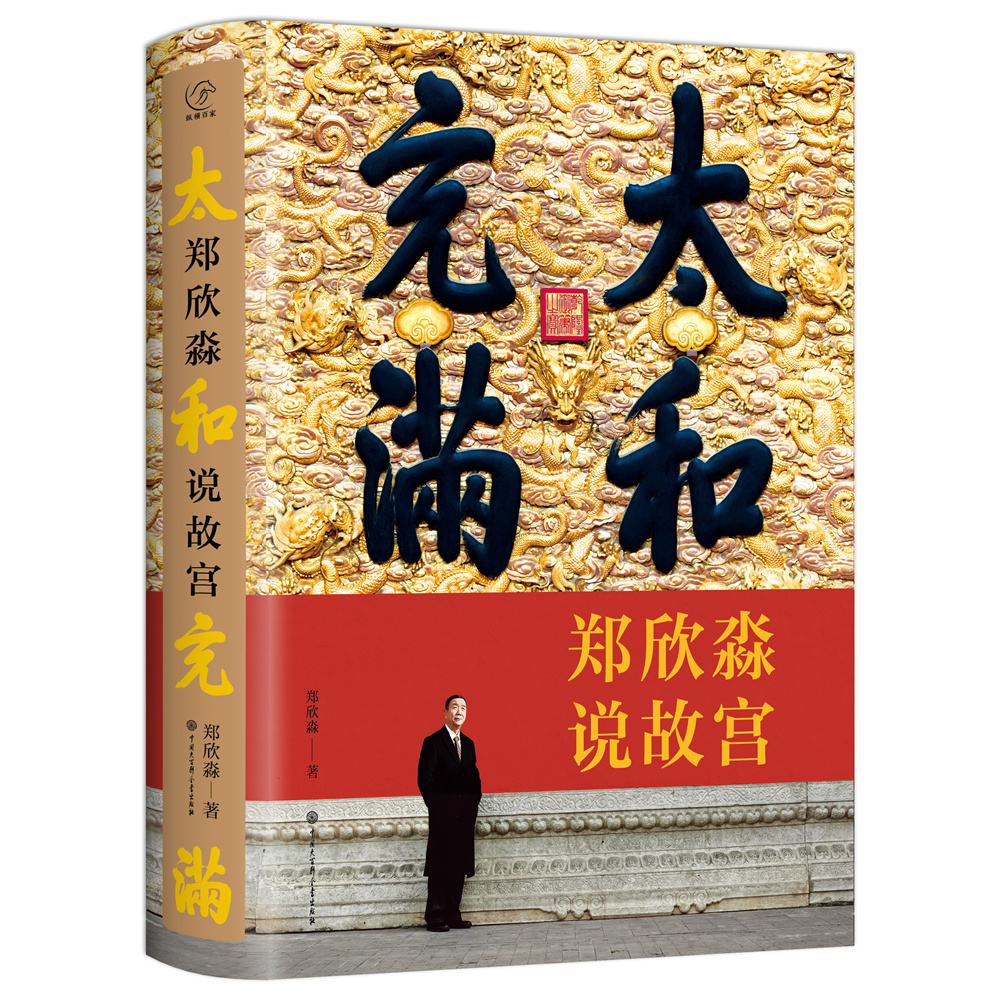
In the new book sharing session, Zheng Xinmiao sighed: "The Forbidden City cannot be finished or written." He emphasized that the Forbidden City is a cultural whole, and the ancient buildings of the Forbidden City, the cultural relics of the Forbidden City, and the Palace Museum itself are actually all linked together. of. Zheng Xinmiao thought: "Why should the maintenance of the Forbidden City restore the appearance of a prosperous age? Why does the cultural relics cleaning of the Forbidden City treat many trivial things as treasures? It is to value the connection between them." He also emphasized that since 2002 The significance of the overhaul of the Forbidden City: "This reflects our country's attitude towards the protection of world cultural heritage, and it also shows that our country is prosperous and strong, and we have the strength to protect it." He proposed that carrying forward and inheriting historical and cultural heritage is beneficial to our society. The development of China is meaningful to our cultural construction today, and they carry and embody the wisdom of our national culture.
Zheng Xinmiao said that there are many interesting details in the Forbidden City that are worth exploring, such as the title of the book "Tai He is full of", which is an inscription by Emperor Qianlong on a plaque, which is located in the Ningshou Palace area. "We know that 'harmony' is a core value of traditional Chinese culture, and 'Taihe' is the highest state of harmony. 'Taihe' is not a simple ancient building, it carries the cultural wisdom of our nation."
"To hand over a magnificent Forbidden City to the next 600 years" was Shan Jixiang's promise during his tenure as president of the Forbidden City. After stepping down as the dean, Shan Jixiang told the Chinese stories in the world heritage through the program "Walking for a Thousand Miles and Riding Alone" and a series of books. Shan Jixiang has published many works such as "I am the "Guardian of the Forbidden City", "The Grand Canal Drifting to the Forbidden City", and "Walking Alone for Thousands of Miles". Today, as an urban planner, a World Heritage promoter and an old Beijinger, he brings readers a new book "Habitat in Beijing - Awakening Industrial Heritage".
Industrial heritage is a testimony to the city's history and is being integrated into the urban life of the new era. "Habitat Beijing - Awakening Industrial Heritage" tells the story of the protective reuse of industrial heritage in the urban construction of the capital Beijing from the perspective of urban planning. The last article described the transformation of the old factory area of Shougang from the iron and steel industry leader into a multi-functional cultural park with distinctive features, and transformed into the office area of the Beijing 2022 Winter Olympics and Winter Paralympics Organizing Committee and one of the venues for the Winter Olympics. "A Song of Ice and Fire"; the second part takes the transformation of 751 industrial heritage into a cultural and creative gathering place in the eastern part of the city as an entry point, interweaves realistic visits and conceptual traces, and describes the interactive development process of industrial heritage protection and urban construction.
Shan Jixiang said that Habitat Beijing aims to appeal to readers to pay attention to new heritage such as Shougang: "Although our country's industrialization started late, it has caught up and developed very fast, especially in the first five years after the founding of the People's Republic of China. The planning country has deployed large-scale industrial heritage throughout the country. Now they have finished their mission, but these industrial heritages that have contributed to national development should be preserved and protected. There are many industrial heritages in the world. The flameout has been stagnant for decades or even a hundred years before the protection was proposed, which is already very broken. But our Shougang can begin to be protected before the flameout, which more completely protects the entire production process, so the Shougang we see now It's magnificent."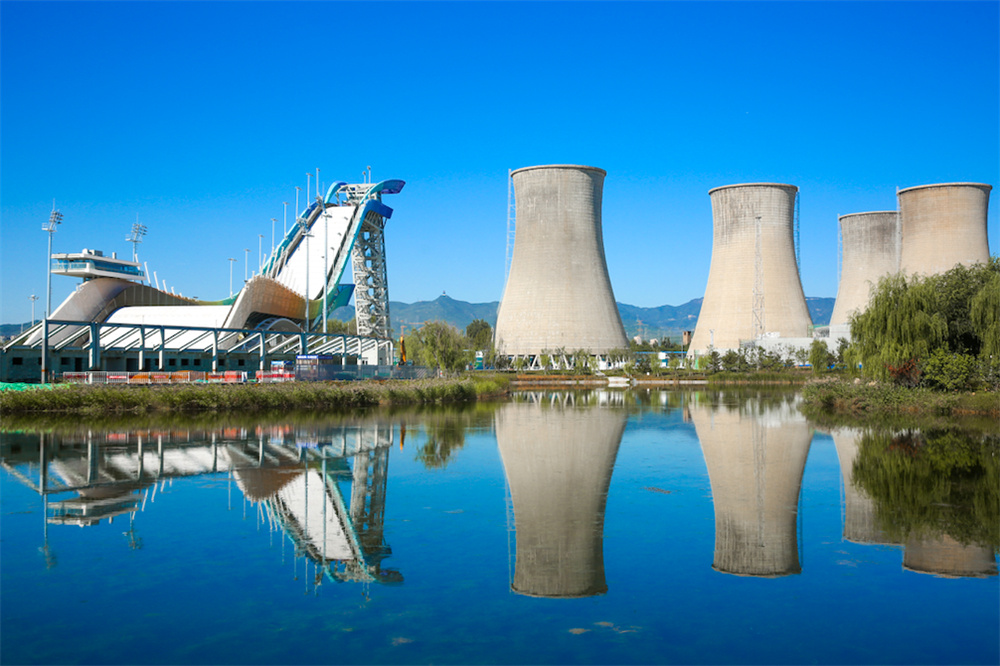
The two deans are not only "comrades-in-arms" with overlapping work, but also friends who cherish each other. Zheng Xinmiao presents a poem to Shan Jixiang every year. The most recent poem is: "Where did you print the great traces in the past year? Wanli Shenzhou is proud of himself. Cloth shoes are calm to visit Chenbao, and green shirts still accompany the spring breeze. Jinfan The Diliu Canal is large, and Zique is in the axis of Beijing and China. The heritage is not old, and many golden sentences are always like a rainbow." ("Comrade Shan Jixiang in Spring") Shan Jixiang believes that this poem is very memorable, and it is also a An entrustment to the cause of cultural heritage.
According to the publisher, China Encyclopedia Publishing House, the publisher is publishing books from different levels and angles, showing the richness and diversity of cultural heritage and forming an encyclopedia product line. "Habitat Hong Kong: Revitalizing Historic Buildings", "Habitat Beijing: The Central Axis and the Water System of the Ancient Capital", "Walking Alone 2", "National Treasures Returning: The Return of China's Lost Overseas Cultural Relics" and other cultural heritage new books will meet with readers this year. .

Event site
During the event, the "Dongcheng District Physical Bookstore Development Alliance" was officially established. As one of the 19 policy packages in the four categories of the "Four-in" policy, the Dongcheng District Physical Bookstore Development Alliance was jointly launched by the first batch of 56 physical bookstores. The alliance will shoulder 9 functions including resource aggregation, mutual empowerment, industry management, and service improvement, build a platform for the innovation and development of physical bookstores, create an ecosystem for physical bookstores to enter shopping malls, buildings, communities, and parks, and promote the development of the physical bookstore industry. It was announced at the event that the establishment of the Dongcheng District Physical Bookstore Alliance will guide each bookstore from decentralization to union, and from single to union.During the day's event, Dongcheng District also launched five slow-life visit check-in routes in the "City of Books", including "National Trend Fashion", "Book Reflection for a Century", "National Wind and Quiet Alley", "Yeji Liu Yun" and "Old City Wenhua". Wangfujing Bookstore, Coderen Bookstore (Wangfujing Pingguoju Store), PAGEONE (Beijing Apm Store), Sanlian Taofen Bookstore (Art Museum Store), Gengshu Club (Dongcheng Longfu Temple Store), Shanhai Sihe by Jetlag There are 38 physical bookstores and street libraries, including Books, Shuxiangshiye Theme Street, and Meihousi Shijingshan Civic Cultural Center.

"City of Books" Slow Life Visit Punch-in Route
On World Book Day, China Encyclopedia Publishing House also held two new book conferences for the presidents of the Forbidden City, releasing Zheng Xinmiao's "Full of Peace - Zheng Xinmiao's Talk about the Forbidden City" and Shan Jixiang's "Habitat in Beijing - Awakening" Industrial Heritage" in two new books.
Zheng Xinmiao and Shan Jixiang
The Forbidden City is a cultural symbol of China and a cultural heritage of the world. Zheng Xinmiao served as the dean of the Palace Museum for nearly ten years. During his tenure, he started the century-old overhaul of the Palace Museum and carried out a seven-year cultural relic cleanup. For the first time, he found out the "family" of the Palace Museum's national treasure, breaking the isolation of the Palace Museum on both sides of the strait, and proposed the "Forbidden City Study". concept. After stepping down as the dean, he still works in the related research work of the Palace of Accidents. He wrote a lot of personal experiences and first-hand historical materials into the book "Full of Supreme Harmony - Zheng Xinmiao's Story of the Forbidden City". The book appreciates and analyzes the buildings and collections of the Forbidden City from the three aspects of things, events and people, introduces the masters and craftsmen in the history of the Forbidden City, and highlights the spirit and character of the Forbidden City passed down from generation to generation. It shows a grand and far-reaching, real three-dimensional Forbidden City.
The book cover of "The Great Harmony - Zheng Xinmiao's Talk about the Forbidden City"
In the book "Full of Harmony", Zheng Xinmiao answered many questions about the Forbidden City with a sense of questions, such as how the Forbidden City became the Forbidden City, and what kind of ups and downs did it have? During the period of the Republic of China, how did the cultural relics of the Forbidden City flow out of the palace? Someone once proposed to abolish the Palace Museum. What is the specific situation? Why did the cultural relics of the Forbidden City move south? How did one Forbidden City later become two museums? and many more.In the new book sharing session, Zheng Xinmiao sighed: "The Forbidden City cannot be finished or written." He emphasized that the Forbidden City is a cultural whole, and the ancient buildings of the Forbidden City, the cultural relics of the Forbidden City, and the Palace Museum itself are actually all linked together. of. Zheng Xinmiao thought: "Why should the maintenance of the Forbidden City restore the appearance of a prosperous age? Why does the cultural relics cleaning of the Forbidden City treat many trivial things as treasures? It is to value the connection between them." He also emphasized that since 2002 The significance of the overhaul of the Forbidden City: "This reflects our country's attitude towards the protection of world cultural heritage, and it also shows that our country is prosperous and strong, and we have the strength to protect it." He proposed that carrying forward and inheriting historical and cultural heritage is beneficial to our society. The development of China is meaningful to our cultural construction today, and they carry and embody the wisdom of our national culture.
Zheng Xinmiao said that there are many interesting details in the Forbidden City that are worth exploring, such as the title of the book "Tai He is full of", which is an inscription by Emperor Qianlong on a plaque, which is located in the Ningshou Palace area. "We know that 'harmony' is a core value of traditional Chinese culture, and 'Taihe' is the highest state of harmony. 'Taihe' is not a simple ancient building, it carries the cultural wisdom of our nation."
"To hand over a magnificent Forbidden City to the next 600 years" was Shan Jixiang's promise during his tenure as president of the Forbidden City. After stepping down as the dean, Shan Jixiang told the Chinese stories in the world heritage through the program "Walking for a Thousand Miles and Riding Alone" and a series of books. Shan Jixiang has published many works such as "I am the "Guardian of the Forbidden City", "The Grand Canal Drifting to the Forbidden City", and "Walking Alone for Thousands of Miles". Today, as an urban planner, a World Heritage promoter and an old Beijinger, he brings readers a new book "Habitat in Beijing - Awakening Industrial Heritage".
Industrial heritage is a testimony to the city's history and is being integrated into the urban life of the new era. "Habitat Beijing - Awakening Industrial Heritage" tells the story of the protective reuse of industrial heritage in the urban construction of the capital Beijing from the perspective of urban planning. The last article described the transformation of the old factory area of Shougang from the iron and steel industry leader into a multi-functional cultural park with distinctive features, and transformed into the office area of the Beijing 2022 Winter Olympics and Winter Paralympics Organizing Committee and one of the venues for the Winter Olympics. "A Song of Ice and Fire"; the second part takes the transformation of 751 industrial heritage into a cultural and creative gathering place in the eastern part of the city as an entry point, interweaves realistic visits and conceptual traces, and describes the interactive development process of industrial heritage protection and urban construction.

Book Cover of "Habitat Beijing - Awakening Industrial Heritage"
Shan Jixiang said that in Beijing, Shougang is an important industrial heritage and a memory of the city. Today, Shougang has become the venue of the Winter Olympics, and has gradually become a large-scale industrial heritage park, providing a fascinating cultural environment and a large-scale cultural facility for our Beijing citizens, for the people of the country, especially for young people. He proposed: "Our city needs cultural diversity and the superposition of our past dynasties. The deeper the superposition and the more cultural layers are superimposed, the more attractive the city will be." Therefore, our industrial development over the past century should also be protected. Let us face the future with more cultural confidence.Shan Jixiang said that Habitat Beijing aims to appeal to readers to pay attention to new heritage such as Shougang: "Although our country's industrialization started late, it has caught up and developed very fast, especially in the first five years after the founding of the People's Republic of China. The planning country has deployed large-scale industrial heritage throughout the country. Now they have finished their mission, but these industrial heritages that have contributed to national development should be preserved and protected. There are many industrial heritages in the world. The flameout has been stagnant for decades or even a hundred years before the protection was proposed, which is already very broken. But our Shougang can begin to be protected before the flameout, which more completely protects the entire production process, so the Shougang we see now It's magnificent."

Shougang
Chen Yonggang, deputy general manager of China Publishing Group Co., Ltd., said in his speech: Dongcheng District has a profound cultural heritage and is where the headquarters of China Publishing Group is located. Zheng Xinmiao and Shan Jixiang successively served as the deans of the Palace Museum, and they also have a lot of connections with Dongcheng District, and they have the consistent spirit of the Palace Museum people. China Encyclopedia Publishing House, a member of the group, has published a series of books on cultural heritage in recent years. Including "I am the "gatekeeper" of the Forbidden City", "The Grand Canal Drifting to the Forbidden City", "The Forbidden City Like a Dream", "Li" Explains the Beauty of the Forbidden City" for general readers, and "The Big Monster in the Forbidden City" for children.The two deans are not only "comrades-in-arms" with overlapping work, but also friends who cherish each other. Zheng Xinmiao presents a poem to Shan Jixiang every year. The most recent poem is: "Where did you print the great traces in the past year? Wanli Shenzhou is proud of himself. Cloth shoes are calm to visit Chenbao, and green shirts still accompany the spring breeze. Jinfan The Diliu Canal is large, and Zique is in the axis of Beijing and China. The heritage is not old, and many golden sentences are always like a rainbow." ("Comrade Shan Jixiang in Spring") Shan Jixiang believes that this poem is very memorable, and it is also a An entrustment to the cause of cultural heritage.
According to the publisher, China Encyclopedia Publishing House, the publisher is publishing books from different levels and angles, showing the richness and diversity of cultural heritage and forming an encyclopedia product line. "Habitat Hong Kong: Revitalizing Historic Buildings", "Habitat Beijing: The Central Axis and the Water System of the Ancient Capital", "Walking Alone 2", "National Treasures Returning: The Return of China's Lost Overseas Cultural Relics" and other cultural heritage new books will meet with readers this year. .
Related Posts